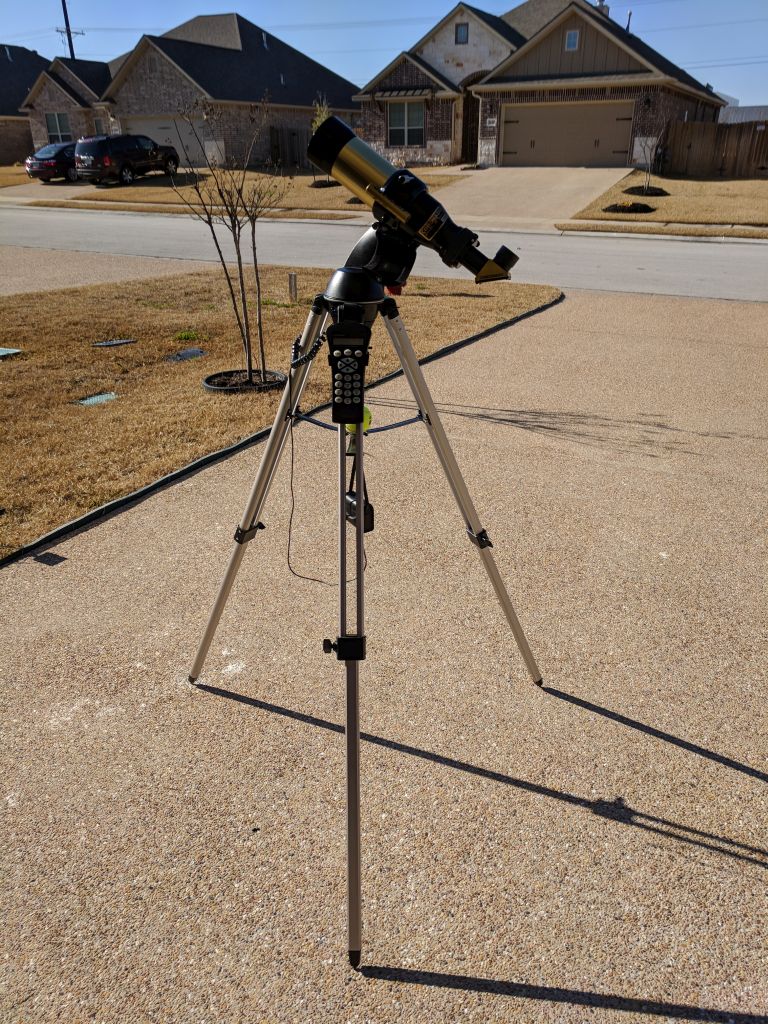
| Observer: | Tom Campbell |
| Location: | College Station, Texas (Long: 96°17'W Lat: 30°37'N) |
| Telescope: | Coronado SolarMax 70 |
Every month, the Brazos Valley Astronomy Club meets at the Texas A&M University Teaching Observatory. At our November meeting, we were discussing the need for a Hydrogen-alpha telescope that the club could use during daylight outreach events (most of the schools around here have daytime science events that we are usually invited to). The observatory caretaker is also a member of our club and said they had one that hadn't been used in years and we were welcome to it. Awesome! I was extra-excited because I've never had the opportunity to observe the Sun in Hydrogen-alpha light before and was looking forward to the experience.
The telescope didn't come with a mount, but looked to be almost new.

A few days ago, I was able to take it home to play with, but of course, rain immediately followed. I spent the time figuring out how to mount the telescope to my existing tripods. The Solarmax 70 is a heavy beast for its size, and my AS80 tripod wasn't up to the task.
I have a Tasco Starguide 60mm refractor and mount, with the bonus of even having GoTo and tracking, but it uses a mounting ring, which is of course only 60mm in diameter. I employed my father-in-law (who lives with us) to come and see if we could find a cheap and/or easy solution. We did. Open up the existing mounting ring and thread another screw through the mounting ring hole which closes it together. We then tightened up this screw to the threaded mounting hole on the Solarmax. Not quite as sturdy as the original, but it stayed in place even when moving the mount with the handheld controller. Yay!

I popped in a 25mm eyepiece and took a look. The sun was blood red through the H-a filter, but as I played with the focus a bit, I could start to see a few prominences and even a bit of detail on the solar disk. Amazing!
The focuser was a bit weird. You manually have to pull out the drawtube and then tighten a screw to lock it in place when the image is focused. For fine focusing, there is a ring on the focuser that you can turn back and forth even when the drawtube is locked. Once I got used to it, it wasn't a big deal, but my dob's Crayford 2-speed focuser has me spoiled.
I spent the rest of the time trying to document what I saw with my smartphone. Took several dozen shots before I got a decent one, but here it is:

I recolored it in Photoshop to give it a more pleasing appearance. The 3 main prominences I saw are easily visible in the shot.
One interesting thing I noticed was that by playing with the fine focus (when looking visually), some details would lose focus but others would come into focus. It really gave a 3D appearance to the Sun's surface.
I still love looking at sunspots in white light, but during a solar minima like we're experiencing right now, the prominences are just as nice to look at.